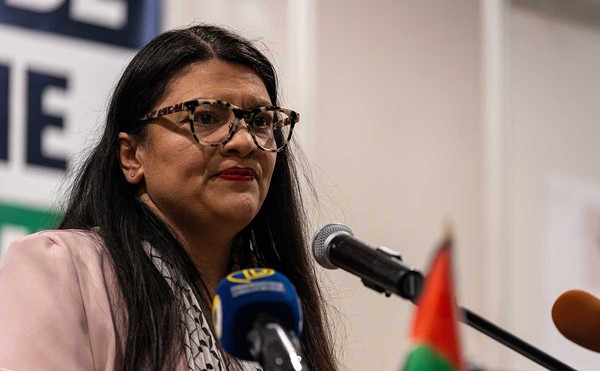The moment when audiences realize A Knight’s Tale isn’t going to be a staid period film about chivalry isn’t a subtle one. It takes place during the first few minutes when, at a jousting competition in rural France, the excited crowd begins chanting “We will, we will rock you,” along with the Queen. It’s an audacious juxtaposition — arena rock in the Middle Ages — and instantly establishes the irreverent yet respectful attitude writer-director Brian Helgeland has toward this era, which he began studying as a University of Massachusetts English major.
“Something about it always intrigued me,” Helgeland says in Los Angeles. “They always talk about it being the Dark Ages, but if I could go anywhere in time it would be to that period, about 200 years before the Renaissance. It was an amazing, rich time, with religion being so alive and part of people’s lives. That whole idea of going on a pilgrimage and believing in it, that has been washed away in modern times. The belief in something other than this world was so much stronger in a time when you thought miracles could happen.”
When it came to A Knight’s Tale, Helgeland chose to focus on a secular form of worship: that intense devotion sports fans feel for their conquering heroes, who are granted the status of earthly gods.
“The first thing I learned when I was doing research,” he explains, “was that tournament jousting was very much the sport of medieval Europe, so much so that if there was a local war going on, they’d stop fighting so the knights could compete in the tour that went from city to city. It reached the point where the Pope had trouble getting knights to go down to the Crusades — they didn’t want to miss the tournaments.”
Helgeland, screenwriter of L.A. Confidential and Conspiracy Theory and writer-director of the starkly brutal Payback, opted for a more optimistic outlook in A Knight’s Tale, which charts the rise of lowly squire William Thatcher (Heath Ledger) into the jousting champion Sir Ulrich von Lichtenstein of Gelderland. The historical impossibility of the situation didn’t bother Helgeland.
“One of the things about a period piece,” he asserts, “is that you can create your own world and control the rules of it. More so in a fantasy world, and this is a kind of medieval fantasy world. The beauty of it is that if the audience accepts it, then you’ve created the rules to your own world as opposed to a contemporary movie where you have to deal with certain truths of the real world. It frees you up dramatically also, as to what you can do. Things you may not be able to get away with in another movie, you can get away with in this one.”
Playing with history is aided by understanding that history — and Helgeland made some important choices early on. Although the film doesn’t reveal it, he did pinpoint a specific year (1372), a decision dictated by the inclusion of two historical figures: the charismatic Black Prince, who served as a warrior-enforcer in France for his father, King Edward III; and writer Geoffrey Chaucer, whose Canterbury Tales remains a landmark in English literature. Chaucer is seen here as a fast-talking rogue who hooks up with a motley crew of outsiders determined to take the jousting world by storm.
“There was a six-month period when Chaucer went missing,” explains Helgeland, “and I thought, ‘That’s the six months he was with these guys.’”
His fanciful take on history grew from a desire to make the Middle Ages more alive for contemporary audiences, whose exposure to knights and jousting comes primarily from gaudy recreations of the once-noble sport. (Ironically, technical advice on the film came from the modern practitioners of jousting who work at the medieval-themed hotel Excalibur in Las Vegas, where world culture goes to die and be reborn as kitsch.) Helgeland also took his cue from the fact that this period has been repeatedly reinvented by historians and artists.
“Originally in the script,” he explains, “the old neighborhood that William was from was London Bridge, because people used to live on it — the population was about 200 people, on and off. We started to do research as to what London Bridge looked like back then, and all the drawings were by Victorian artists. So the irony is that what everyone thinks of as historically accurate is what some guy in 1860 thought it looked like. Which is kind of freeing in a way, because you could make it be the world you wish it was, rather than the way you know it was.”
Making his own transition from screenwriter to director — a task that in Hollywood can be nearly as difficult as William’s transformation from squire to knight — wasn’t so daunting for Helgeland.
“There’s a notion, and directors try and further it,” he states, “that writers just write dialogue. But if you’re into movies as a medium for telling stories, you have to be aware that a lot of it is visual information. It’s that old saying: ‘A picture is worth a thousand words.’ So I think that any good writer is trying to communicate visually as well.”
Serena Donadoni writes about film for the Metro Times. E-mail her at [email protected]




